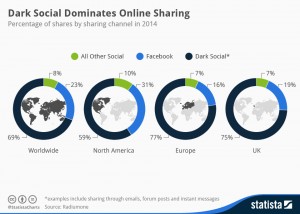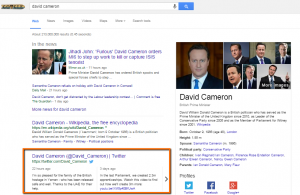As big data continues to grow by leaps and bounds, columnist Melody Gambino discusses the future of programmatic and data deals, and why high-quality data is the key to success.
 Earlier this year, I wrote about the emerging opportunity for brands to truly adopt personal marketing. I define personal marketing as the ability within a programmatic media-buying context to customize audience engagement at scale.
Earlier this year, I wrote about the emerging opportunity for brands to truly adopt personal marketing. I define personal marketing as the ability within a programmatic media-buying context to customize audience engagement at scale.
Because paid media technology has matured to a point where marketers can truly establish meaningful relationships in real time based on a given consumer’s goals, desires and location, there is no longer a valid excuse for brands to “spray and pray” with their media budgets.
As I explained in the earlier piece, one of the key engines driving this personal marketing movement forward with such gusto is the growing sophistication of accruing, assessing and then applying data in real time. We all know how wide and deep consumers’ digital footprints are in this day and age.
Consumers are heavily immersed in social media at an unprecedented level of time and engagement, which offers data collectors as broad a canvas as ever to gather consumer information, which then is used to strengthen the feedback loop with them.
Brace yourself for an even bigger data explosion
This data explosion shows no signs of abating. On the contrary, if you listen to the predictions of people like Tim Whitfield, Group M Australia’s Director of Technical Operations, the industry is on the cusp of an even greater level of data usage.
According to Whitfield, data will become such a vital linchpin resource for agencies and their brand marketer clients that third-party data companies will be compelled to set up “data trading deals” at such a large scale that they will be referred to as “all-you-can-eat” data deals.
This could take the form of exclusive data packages negotiated on behalf of specific clients based on usage commitments. In a LinkedIn blog post, Whitfield predicted that these deals would be popular by 2020.
As a part of this trend, Whitfield envisions Brand Safety, Ad-Fraud and Viewability (BAV — Yay, a new acronym!) technologies being seamlessly integrated with major social media platforms like Facebook, YouTube and Twitter, as well as with programmatic buying platforms like AppNexus, Videology and the Trade Desk and measurement mainstays like Nielsen and comScore.
Clearly, Whitfield is implying that one of the big challenges facing data-driven marketing will be the difficult imperative of streamlining high-quality data.
High-quality data holds big promises
In ad tech, the quality of data is directly correlated to the quality of ads served. Higher-quality data creates better brand exposure to relevant consumers.
But the future holds an even bigger role for online data. As marketers immerse themselves in higher volumes of consumer data, they look to improve their brand viewability or volume of sales and also hope to accurately assess their customers’ characteristics and behavior, which, in turn, allows them to better communicate their messages back to their audiences.
As the future teems with rich troves of data sets, the natural coalescence between adtech and martech systems will occur. Paid media DSPs ( demand-side platforms) will ultimately fit into Salesforce, Adobe and Oracle tech stacks, making it possible to measure marketing spends holistically against business objectives efficiently.
As the industry hones its real-time data collection/messaging infrastructure, marketers will be able to more nimbly seize marketing moments or opportunities that emerge from seemingly nowhere year-round. This dynamic will occur on average days, as well as big-impact tent-pole events.
Now, think back to the importance of high-quality data and remember that we are only as strong as our weakest link. As we keep integrating different sources of data to understand aspects of consumer behavior, one low/bad-quality data set can create inaccurate insights. That, in turn, will not only cost money, but it also will misrepresent the consumer landscape, thereby damaging strategic plans and predictions.
In conclusion, it’s safe to say that big data can make or break a brand. Just like a pair of suitable eyeglasses, good data can help you see the small details you’ve missed and plan your future steps, but bad data can really give you a headache.
Some opinions expressed in this article may be those of a guest author and not necessarily Marketing Land. Staff authors are listed here.
Marketing Land – Internet Marketing News, Strategies & Tips
(95)






